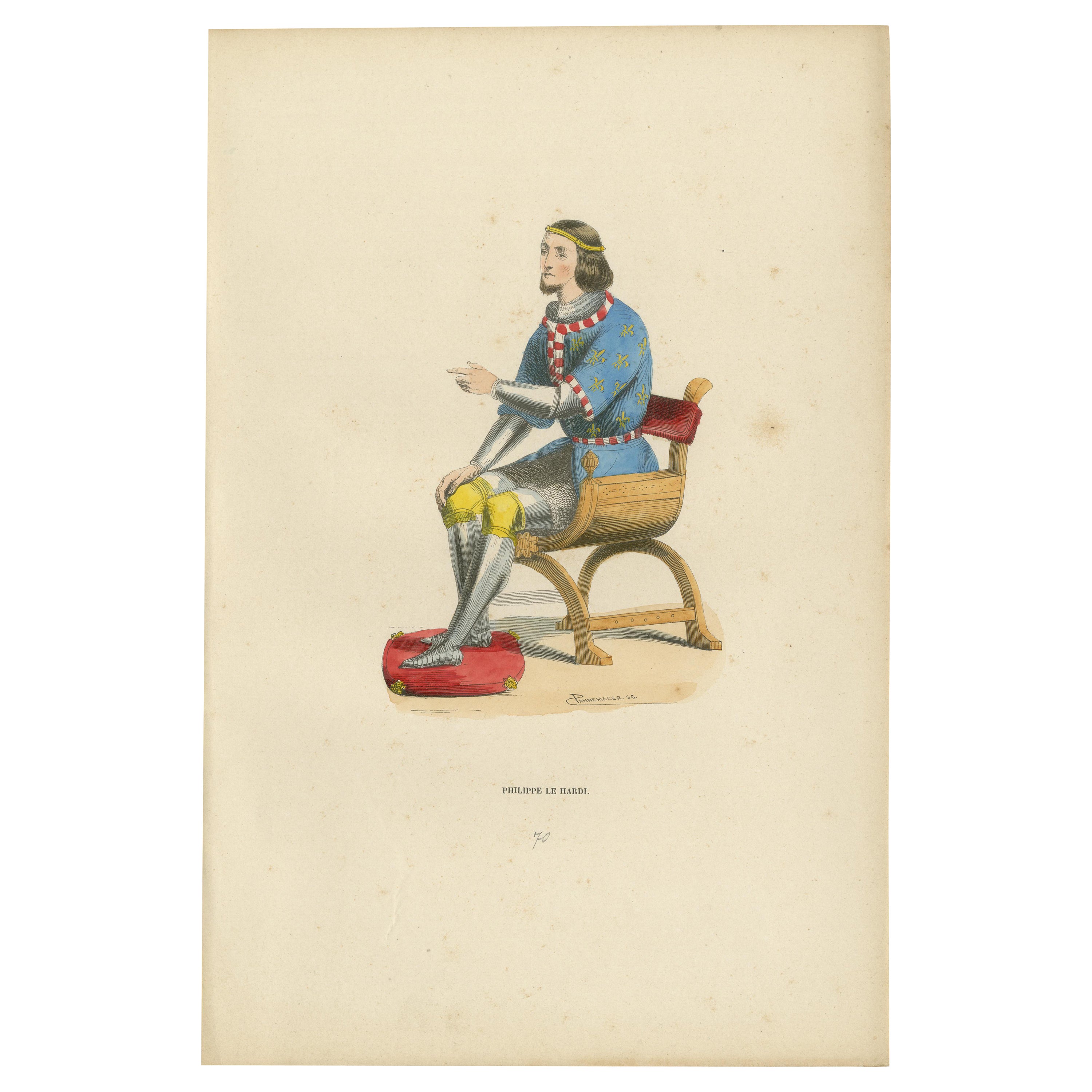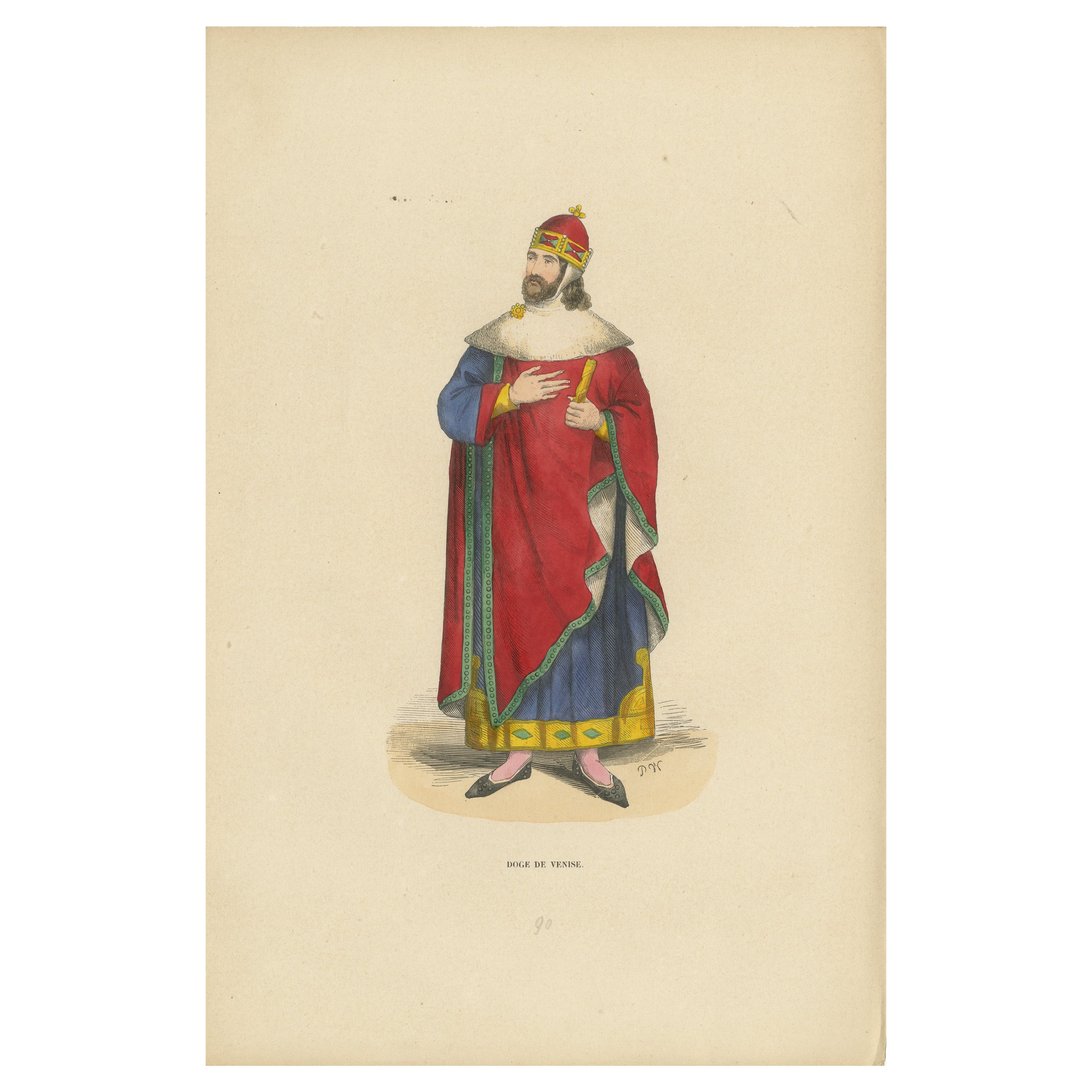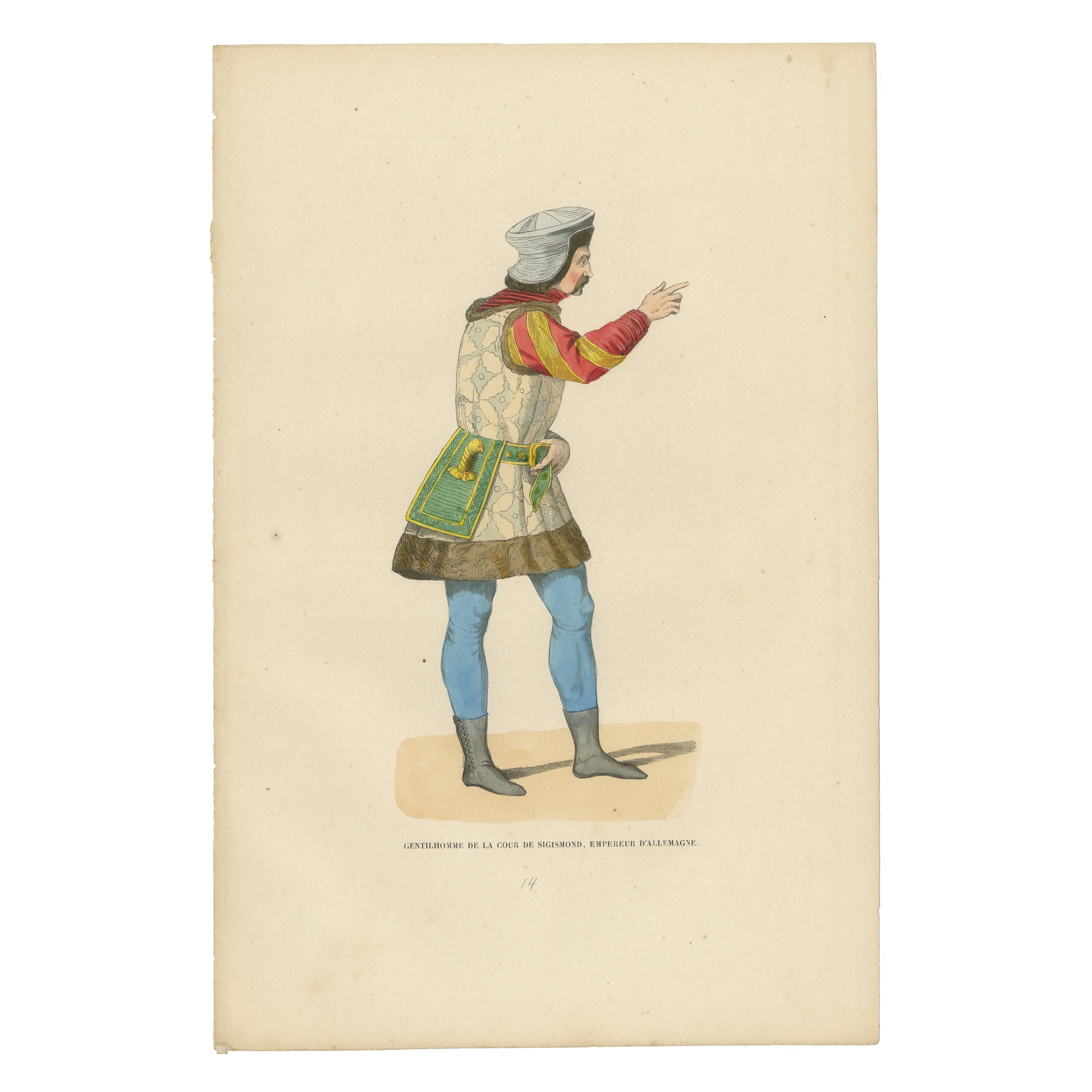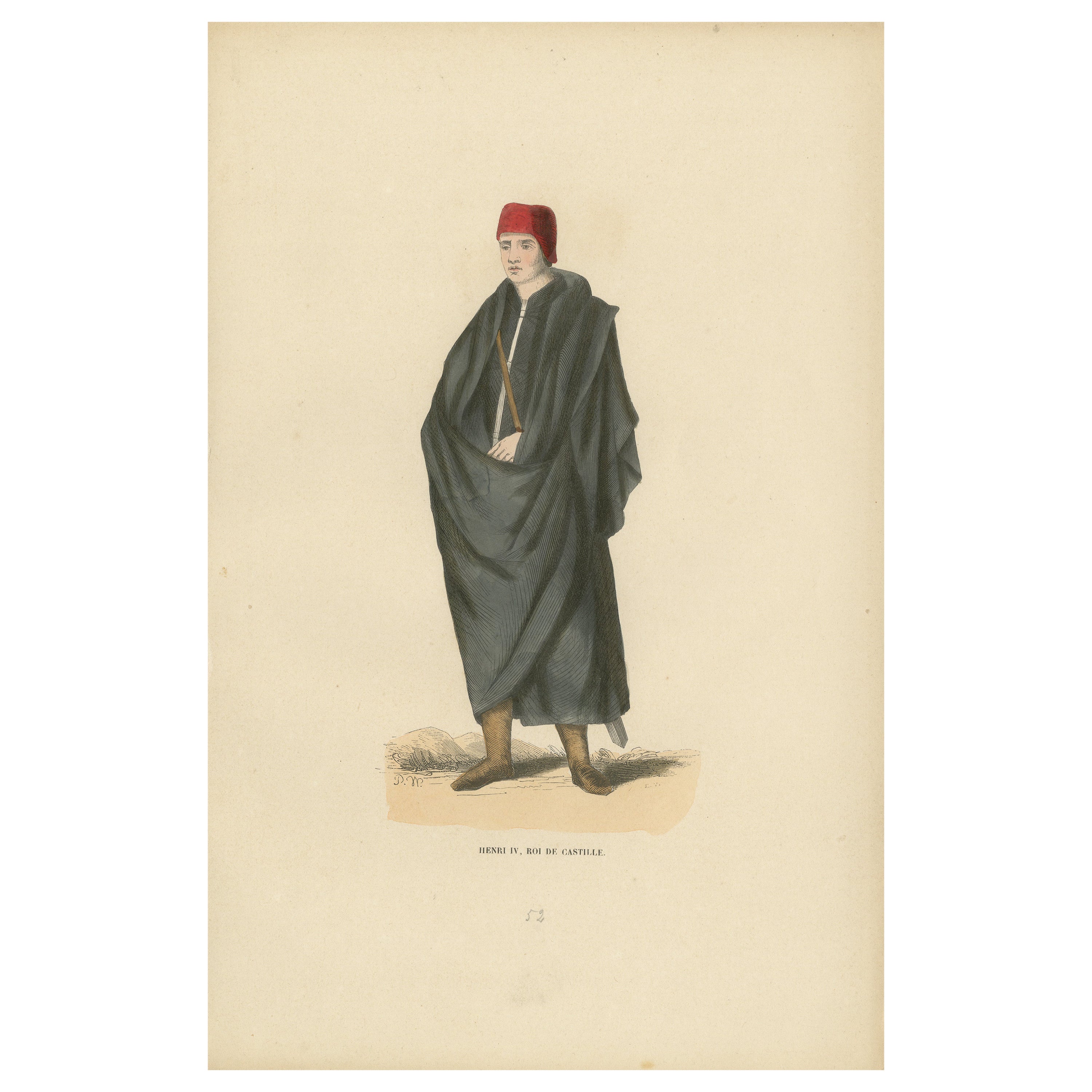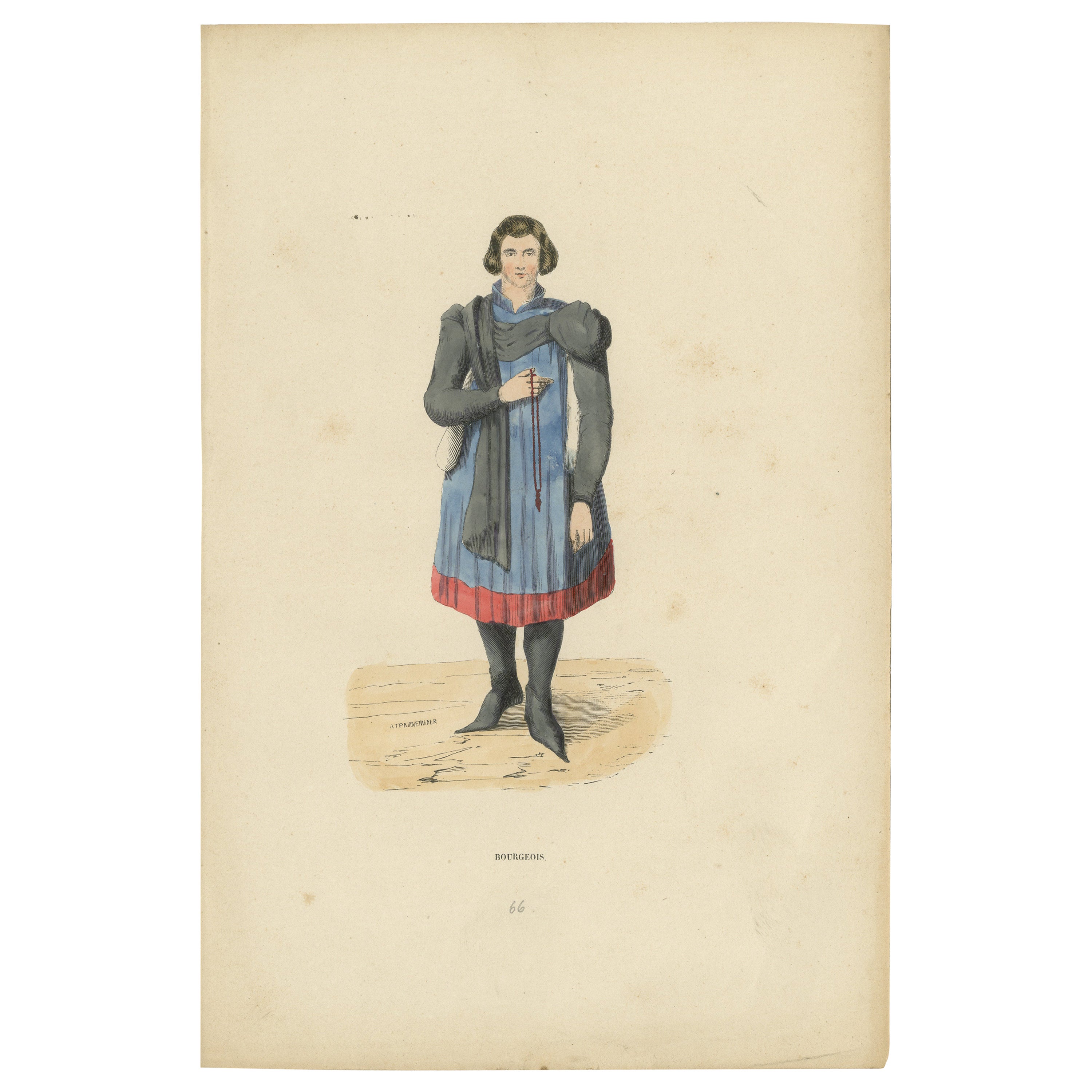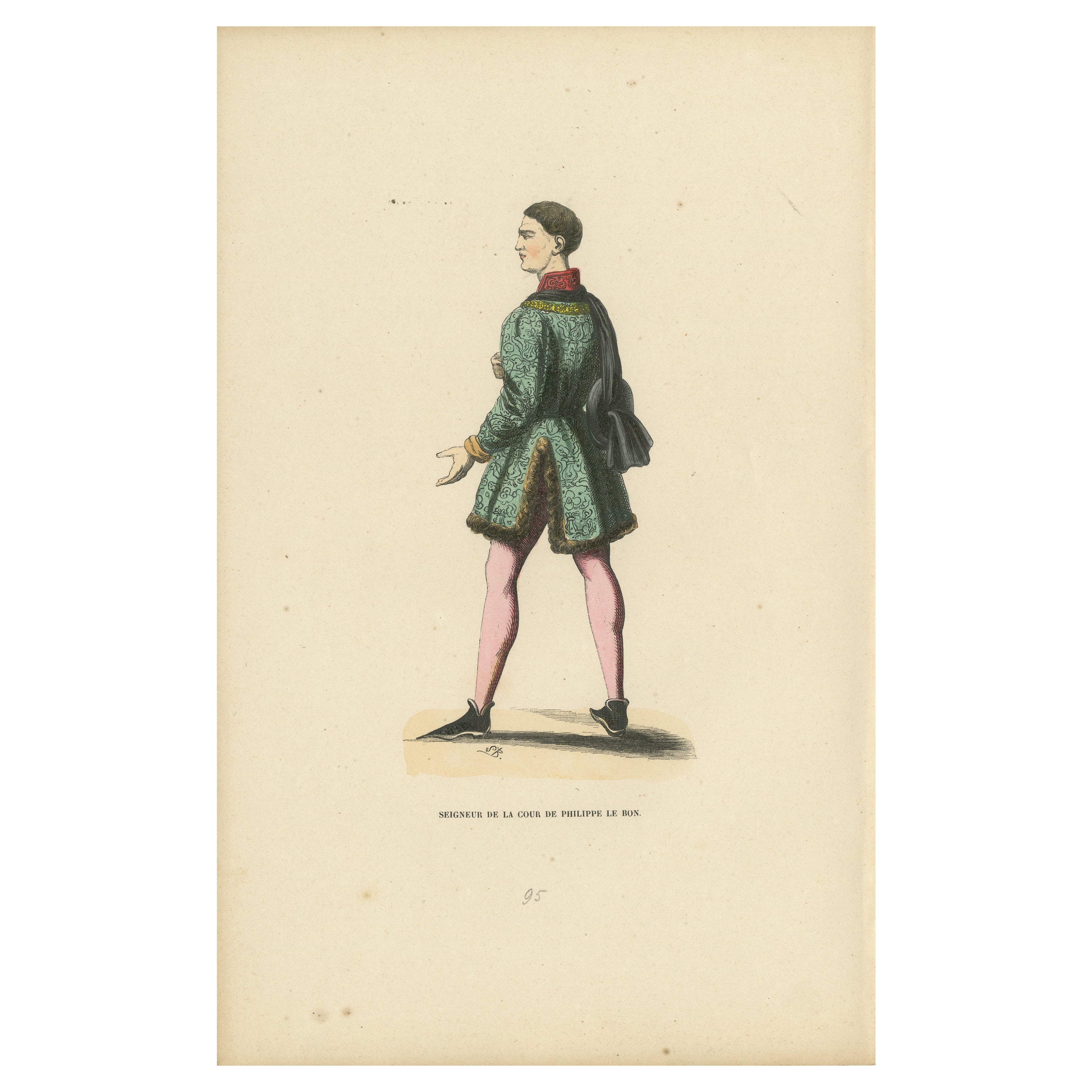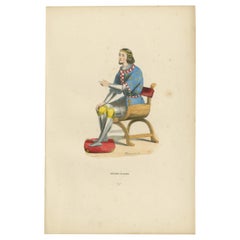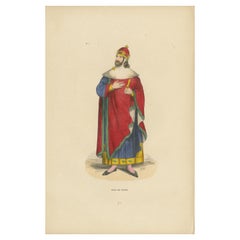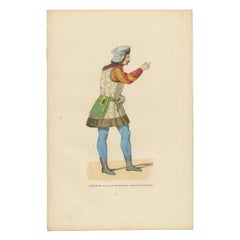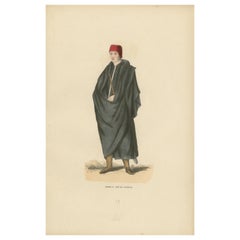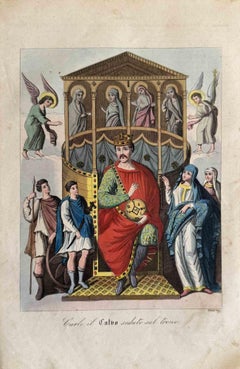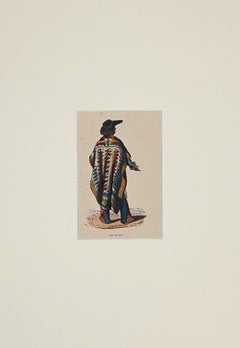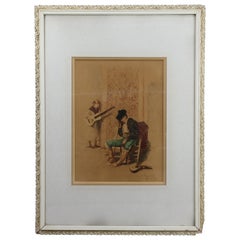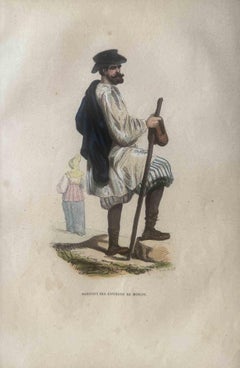Items Similar to Seated Spanish Nobleman: The Visage of Authority, 1847
Want more images or videos?
Request additional images or videos from the seller
1 of 6
Seated Spanish Nobleman: The Visage of Authority, 1847
$151.23
$189.0320% Off
£113.35
£141.6920% Off
€128
€16020% Off
CA$207.76
CA$259.7020% Off
A$231.94
A$289.9320% Off
CHF 121.53
CHF 151.9220% Off
MX$2,839.21
MX$3,549.0120% Off
NOK 1,543.49
NOK 1,929.3620% Off
SEK 1,455.32
SEK 1,819.1520% Off
DKK 974.38
DKK 1,217.9820% Off
Shipping
Retrieving quote...The 1stDibs Promise:
Authenticity Guarantee,
Money-Back Guarantee,
24-Hour Cancellation
About the Item
Title: "Seated Spanish Nobleman: The Visage of Authority"
Description: This original antique detailed print portrays a Spanish nobleman from the Middle Ages, seated in a commanding position that denotes his high social status and authority. He is depicted in a stately pose, exuding an air of confident repose that reflects his powerful position within the societal hierarchy.
The nobleman is dressed in a long blue tunic, a color often associated with nobility and depth of character. His tunic is complemented by a rose-colored undershirt, a combination that suggests both wealth and taste. Over his attire drapes a heavy, deep blue cloak, a mark of his status, which provides both warmth and an impression of gravitas.
On his head, he wears a broad-brimmed green hat, which is both a stylish and practical accessory, shading his eyes and symbolizing his affinity with the outdoors and perhaps his participation in hunting, a favorite pastime of the nobility.
His footwear consists of red shoes, possibly made of fine leather or velvet, adding a striking contrast to his ensemble. The nobleman's demeanor is one of contemplation, with a hand resting on a money pouch at his belt, indicating his control over wealth and economic affairs.
The chair in which he sits is adorned with simple yet elegant ornamentation, including a valance with floral motifs, signifying a connection to nature and his domain. The setting is minimalistic, focusing the viewer’s attention on the nobleman’s figure and attire.
Through this print, we gain insight into the fashion and symbols of status that were prevalent among the Spanish nobility during the Middle Ages. It is a snapshot of power, heritage, and the cultural significance of attire as a reflection of one's role in society.
The colors have a nice glow over them. Historically, egg whites, known as glair, and sometimes egg yolk were indeed used in illumination and painting, particularly in manuscripts, to give colors a brighter appearance and to add a sheen or gloss to the work. This technique was quite common during the Middle Ages and into the Renaissance.
Egg whites can be applied as a varnish over pigments to enhance their brightness and to protect the colors. This application could make the colors appear more vivid and also add a slight glossy sheen to the surface of the image.
Egg yolk, on the other hand, was commonly used as a binding agent in paint. It forms the basis of tempera paint, a medium that was widely used before the advent of oil painting. Egg yolk helps to create a durable and long-lasting color that adheres well to various surfaces.
In the context of the print from 1847, it's less likely that egg whites or yolks were used directly on the print, as by that time, commercial printing processes would have been more advanced and less reliant on such manual methods. However, if this print is a representation of an earlier style or is meant to mimic the appearance of hand-painted manuscripts, the original artists might have employed techniques or materials that gave a similar effect to those achieved with egg-based binders and varnishes.
- Dimensions:Height: 10.63 in (27 cm)Width: 7.09 in (18 cm)Depth: 0 in (0.02 mm)
- Materials and Techniques:
- Period:
- Date of Manufacture:1847
- Condition:Good. Overal light toning and light soiling but the image itself clean and hand-colored almost 200 years ago and still in expliciet colors. Aged paper with typically warm, yellowish-brown hue, mostly around the edges. Study the images carefully.
- Seller Location:Langweer, NL
- Reference Number:Seller: BG-13635-671stDibs: LU3054337905702
About the Seller
5.0
Recognized Seller
These prestigious sellers are industry leaders and represent the highest echelon for item quality and design.
Platinum Seller
Premium sellers with a 4.7+ rating and 24-hour response times
Established in 2009
1stDibs seller since 2017
2,511 sales on 1stDibs
Typical response time: <1 hour
- ShippingRetrieving quote...Shipping from: Langweer, Netherlands
- Return Policy
Authenticity Guarantee
In the unlikely event there’s an issue with an item’s authenticity, contact us within 1 year for a full refund. DetailsMoney-Back Guarantee
If your item is not as described, is damaged in transit, or does not arrive, contact us within 7 days for a full refund. Details24-Hour Cancellation
You have a 24-hour grace period in which to reconsider your purchase, with no questions asked.Vetted Professional Sellers
Our world-class sellers must adhere to strict standards for service and quality, maintaining the integrity of our listings.Price-Match Guarantee
If you find that a seller listed the same item for a lower price elsewhere, we’ll match it.Trusted Global Delivery
Our best-in-class carrier network provides specialized shipping options worldwide, including custom delivery.More From This Seller
View AllOld Engraving of Philippe le Hardi: The Bold Duke of Burgundy in Council, 1847
Located in Langweer, NL
Title: "Philippe le Hardi: The Bold Duke in Council"
Description: This print captures Philippe le Hardi, also known as Philip the Bold, Duke of Burgundy, seated in a posture of cons...
Category
Antique 1840s Prints
Materials
Paper
$151 Sale Price
20% Off
Venetian Dignity: The Doge in Contemplation, Engraving of 1847
Located in Langweer, NL
Title: "Venetian Dignity: The Doge in Contemplation"
Description: This handcolored historical print captures a Doge of Venice in a moment of solemn reflection. The Doge, as the chie...
Category
Antique 1840s Prints
Materials
Paper
$132 Sale Price
20% Off
Courtly Splendor: A Nobleman at Emperor Sigismund's Court, 1847
Located in Langweer, NL
The image depicts a man identified as a "Gentilhomme de la cour de Sigismond, empereur d'Allemagne," which translates to "Gentleman of the court of Sigismund, Emperor of Germany."
This individual is portrayed in a profile stance, dressed in attire that is indicative of the high-status courtiers during the time of Emperor Sigismund, who reigned in the early 15th century. He is wearing a turban-like headgear, which reflects the influence of Eastern fashion on European court attire, possibly due to the Ottoman influence or the general exchange of culture during the Crusades and subsequent interactions.
His doublet is richly patterned and he has puffed sleeves in red, which were fashionable among the nobility during the period. The garment is accented with a decorative belt that holds what appears to be a purse or a pouch. He also sports tight blue hose and pointed shoes, which complete the ensemble typical of a nobleman or a high-ranking court official in the Holy Roman Empire.
Egg whites can be applied as a varnish over pigments to enhance their brightness and to protect the colors. This application could make the colors appear more vivid and also add a slight glossy sheen to the surface of the image.
Egg yolk, on the other hand, was commonly used as a binding agent in paint. It forms the basis of tempera paint, a medium that was widely used before the advent of oil painting. Egg yolk helps to create a durable and long-lasting color that adheres well to various surfaces.
In the context of the print from 1847, it's less likely that egg whites or yolks were used directly on the print, as by that time, commercial printing processes would have been more advanced and less reliant on such manual methods. However, if this print is a representation of an earlier style or is meant to mimic the appearance of hand-painted manuscripts...
Category
Antique 1840s Prints
Materials
Paper
$151 Sale Price
20% Off
Henry II of Castile: A Monarch's Contemplation, Hand-Colored Lithograph, 1847
Located in Langweer, NL
Title: "Henry II of Castile: A Monarch's Contemplation"
Description: This print from "Costume du Moyen Age" likely dating from 1847, presents Henry II of Castile, standing in a pens...
Category
Antique 1840s Prints
Materials
Paper
$151 Sale Price
20% Off
Engraving of Medieval Bourgeois: A Portrait of Urban Sophistication, 1847
Located in Langweer, NL
Title: "Medieval Bourgeois: A Portrait of Urban Sophistication"
Description: This print appears to depict a man of the bourgeoisie, the urban middle class, during the medieval perio...
Category
Antique 1840s Prints
Materials
Paper
$113 Sale Price
20% Off
Lord of the Court of Philip the Good, Engraved and Published in 1847
Located in Langweer, NL
The image presents a nobleman of the court of Philippe le Bon (Philip the Good), Duke of Burgundy. The nobleman stands in profile, gazing into the distance, with an air of contemplat...
Category
Antique 1840s Prints
Materials
Paper
$113 Sale Price
20% Off
You May Also Like
Uses and Customs - Charles Calvo Sitting on the Throne - Lithograph - 1862
Located in Roma, IT
Uses and Customs - Charles Calvo sitting on the throne is a lithograph on paper realized in 1862.
The artwork belongs to the Suite Uses and customs of all the peoples of the univers...
Category
1860s Modern Figurative Prints
Materials
Lithograph
Man from Puebla - Original Lithograph - 1849
Located in Roma, IT
Man from Puebla is an original hand-watercolored lithograph on ivory paper by Anonymous Artist of 19th Century, in 1849.
In excellent conditions: As good as new.
Not signed. Title...
Category
1840s Modern Figurative Prints
Materials
Paper, Lithograph
Antique G Ferris Spaniard Siesta Print, c1888
Located in Big Flats, NY
An antique Spanish print depicts Spaniard Siesta with girl playing guitar, signed G Ferris, matted and framed, c1888
Measures - 27" H x 20.25" W x 1.25" ...
Category
Antique 19th Century South American Prints
Materials
Glass, Paper, Wood
$280 Sale Price
20% Off
Uses and Customs - Man From Moscow - Lithograph - 1862
Located in Roma, IT
Uses and Customs - Man From Moscow is a lithograph on paper realized in 1862.
The artwork belongs to the Suite Uses and customs of all the peoples of the universe: " History of the ...
Category
1860s Modern Figurative Prints
Materials
Lithograph
O-Poth-Le-Yo-Ho-Lo by McKinney & Hall, 1842
Located in Kenilworth, IL
Hand colored lithograph portrait of "O-Poth-Le-Yo-Ho-Lo," a Creek Chief & speaker of the Councils, after the oil on canvas portrait by Charles Bird King. The lithographic portrait is from McKinney...
Category
Antique 1840s American Prints
Materials
Paper
Homme de Puebla - Lithograph by Auguste Wahlen - 1844
Located in Roma, IT
Homme de Puebla is a hand colored lithographs realized by Auguste Wahlen in 1844.
Good conditions.
The artwork belongs to the Suite Moeurs, usages et costumes de tous les peuples d...
Category
1840s Modern Figurative Prints
Materials
Lithograph
More Ways To Browse
Green Egg Used
Red Rose Print Dress
Antique Hunting Accessories
Velvet Cloak
Antique Money Belt
Antique Glass Powder Boxes
Antique Horse Wagon
Antique Hunting Accessories
Antique Hunting Pack
Antique Metal Rooster
Antique Metal Tea Pot
Antique Necessaire
Antique Pie Case
Antique Pill Box Gold
Antique Sake Set
Antique Silver Boxes Repousse
Antique Storm Glass
Antique Thimbles
